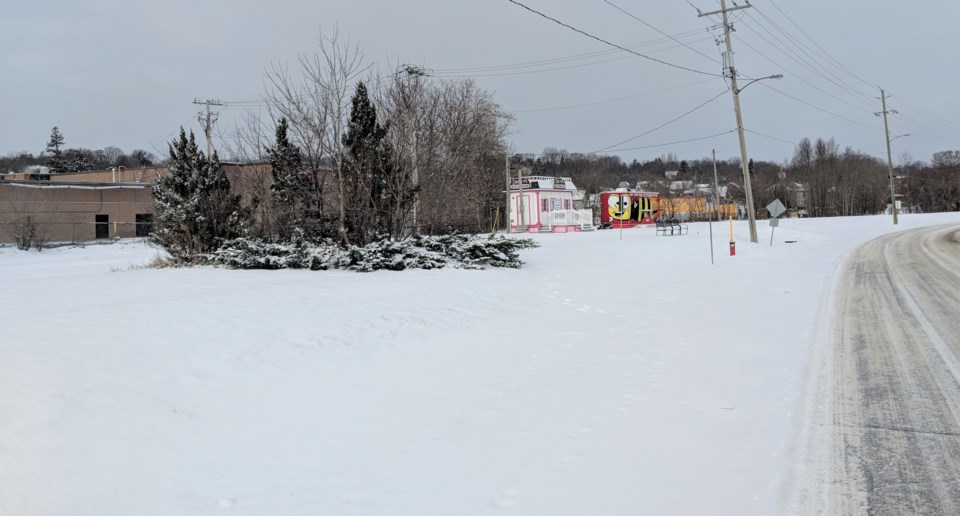OrilliaMatters received the following letter from Kate Grigg in response to recent articles about the city's ambitious waterfront development plan, which the new city council has made its No. 1 priority for the coming term.
***********************
Many of the best, most interesting things aren’t planned, they just happen. Nobody planned Broadway, for instance, or Vincent van Gogh or the Northern Lights.
Making plans and throwing money around is no panacea, especially when it comes to humans tampering with the natural world, as Orillia now wants to tamper with its waterfront.
Not that there aren’t good and successful plans. But good and successful plans are usually subsidiary to some more original, authentic inspiration.
The famous and beautiful Royal Crescent in Bath, England, for example, was planned in response to the number of people flocking to that city. But people were flocking to Bath because of the spas, because of the hot springs which were unplanned, natural things.
There’s a difference between arbitrary, artificial plans and things that come into being organically. Is it wise to decide that Orillia needs four-season interest and therefore four-season interest will somehow be manufactured?
Nearly all the good things about Orillia so far have been unplanned: the twinned lakes, the waterfront, Stephen Leacock, Gordon Lightfoot, etc.
And all the important things that have happened at the park up until now have been real not artificial: the steamboats whose carcasses are buried by the shore, the asylum for idiots, the boat works that supported the war, visits by the Queen and Champlain, French’s stand. All based in real life, real events that unfolded unpredictably, and all things that created atmosphere, a sense of place.
The artificial berms that were installed at Couchiching Beach Park (at the suggestion of consultants) are the least used area of the park, the emptiest and most lifeless. The water feature at the new library, however tastefully designed, also seems to lack appeal.
The town of Gravenhurst had a pleasing natural waterfront where the Segwun and Wenonah II dock (and what could be more charming?) until a developer was hired to install an artificial shopping and dining complex on the wharf, somehow believing that concrete and commercialism go hand in hand with cold bright lakes and northern wilderness. (I don’t know if it’s successful or not. After seeing it once I never went back.)
Toronto built Ontario Place, an artificial theme park that is now defunct. And in an attempt to make itself as cool as New York City, Toronto has recently created an embarrassing imitation of Times Square at Dundas and Yonge, in the mistaken belief that you can force things like the chutzpah of New York to happen.
And do we need to mention the disturbing example of Niagara Falls, where apparently the more monumental the natural beauty, the more monumental human stupidity.
Things need to evolve naturally.
Downtown density and walkable neighbourhoods are good and desirable, as are variations in housing and demographics.
And since empty buildings and stores have appeared downtown the natural step would be to revamp and repurpose those empty buildings (and perhaps even sections of cavernous churches) into condos, townhouses, and apartments (in styles from industrial to New York brownstone and bijou).
Any good interior decorator will tell you that if you want your house (or in this case town) to be beautiful but still feel like home, if you want it feel genuine, you should rearrange the things you have before going out to buy new.
West Ridge is a perfect example of impersonal development. The same structures can be found on the outskirts of any town in North America and in no way indicate who or where you are.
So instead of building on the waterfront why not rearrange what we already have?
Someone with a little vision could rework the Metro plaza into a mix of residential and commercial uses while leaving the valuable natural buffer behind the plaza intact.
Housing developments are a dime a dozen but green space, especially a waterfront like Orillia’s, is irreplaceable.
A tantalizing glimpse of the waterfront from Coldwater Road could and should be incorporated but it should be a gateway of a kind that is in sync with what it is revealing –- the natural world, not traffic and busy thoroughfares.
And while it may not be cheaper to revamp (builders and developers are always going to tell you that) money shouldn’t be the determining factor in such an undertaking. Making a mistake with the waterfront will be a far higher price to pay.
Nor is there any need to rush. It’s not about this or that person wanting things done. It’s about doing something right and lasting. “Follow your instinct” and “don’t hurry” are the two life principles that ignored most often lead to regret.
Kate Grigg
Orillia
***********************



